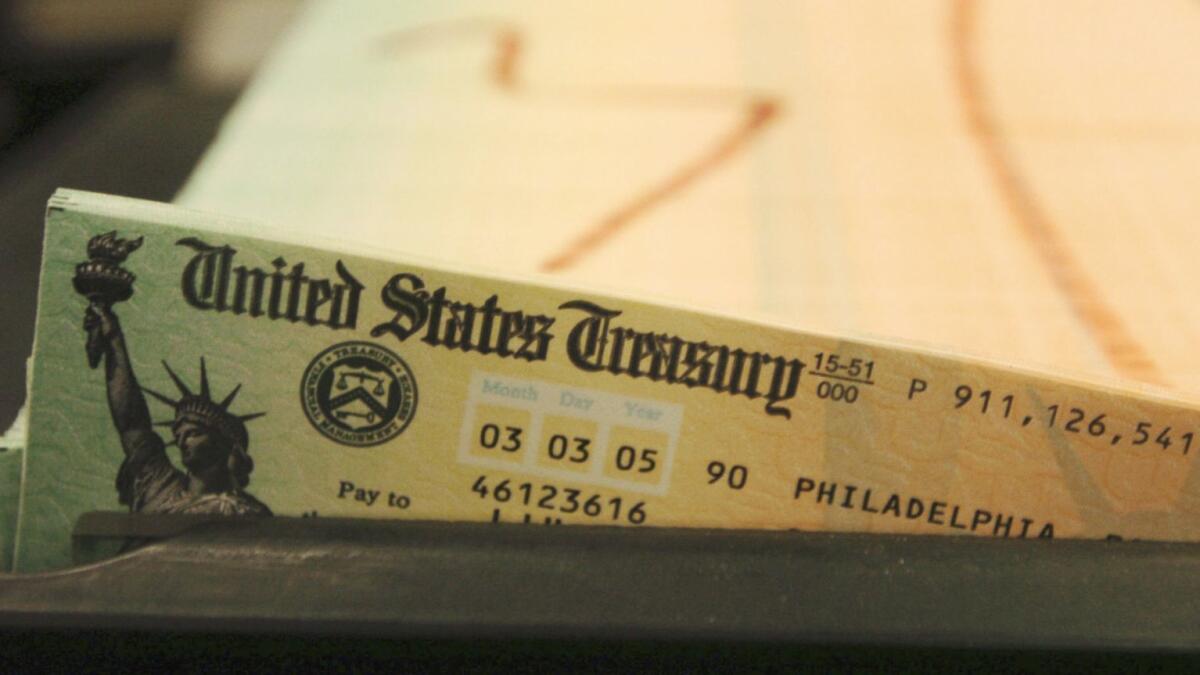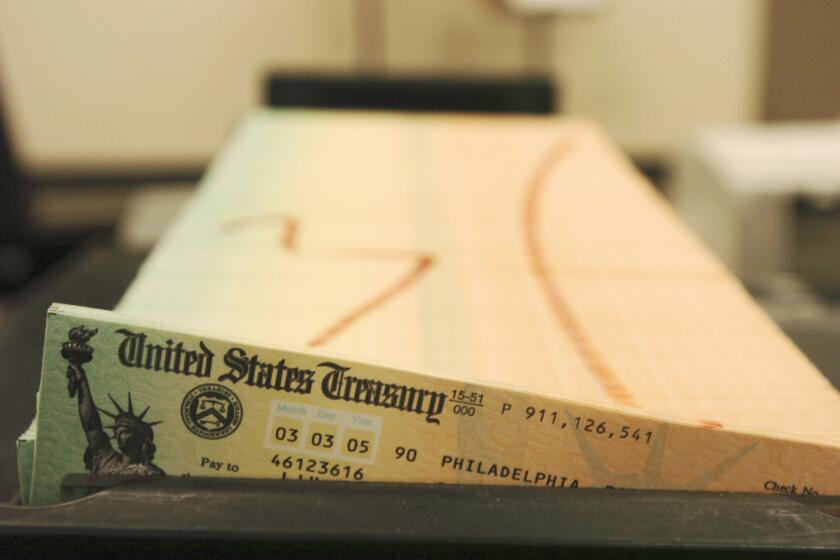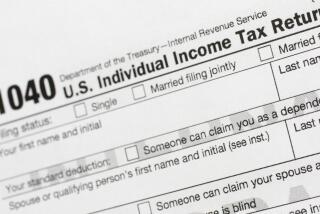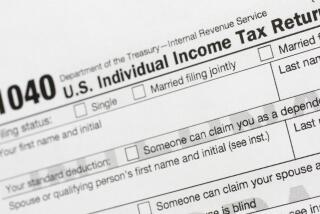IRS launches website to speed relief payments to some low-income Americans who don’t file taxes

WASHINGTON — Many Americans who didn’t file taxes in 2018 or 2019 because they earned less than $12,000 a year can now provide the IRS with direct deposit information in order to more quickly receive their up to $1,200 economic stimulus payout, the IRS announced Friday.
The new site -- largely targeted at low-income people, the homeless and others who it is feared may fall through the cracks in distributing the money -- is for people who: had gross income that did not exceed $12,200 for an individual or $24,400 for married couples for 2019; were not otherwise required to file a federal income tax return for 2019; and didn’t plan to, the IRS said.
Using the portal, people can submit basic personal information to the IRS, including full names and Social Security numbers for themselves and any spouse or children in the home, mailing address and bank account information for direct deposit.
New America Foundation, a Washington, D.C., think tank, estimates that 12 million non-filers may fall into that category.
The portal is separate from the soon-to-be-launched “Get My Payment” portal that the IRS is creating for people who filed their taxes but did not get a tax refund through direct deposit. That portal -- which will also allow people to track the status of their payout -- is expected to be ready as soon as next week.
Congress approved the up to $1,200 payouts in the $2-trillion economic bailout it passed last month in an effort to help Americans harmed by the coronavirus-related shutdowns pay their bills. An estimated 110 million Americans, including Social Security recipients, will begin seeing the money in their bank accounts next week, but some of the payments have been delayed as the Treasury Department races to create new systems to reach the approximately 101 million tax filers who do not already have direct deposit information on file with the IRS.
The government doesn’t routinely print and mail millions of paper checks anymore, and some estimates are that it would take four months or more to get paper checks to everyone if the government cannot obtain more direct deposit information.
All U.S. residents are eligible for a payment as long as they have a work-eligible Social Security number, cannot be claimed as a dependent on another person’s taxes and meet the income requirements. Those with an adjusted gross income below $75,000 (or $150,000 for a married couple) would receive the full amount: $1,200 per adult or $2,400 for a married couple. In addition, they are eligible for an additional $500 per child under 17.
Americans who make between $75,000 and $99,000 (or married couples making between $150,000 and $198,000) are eligible for a portion of the payment.
When will stimulus checks go out? Who qualifies for a check? And other frequently asked questions.
Many in Congress have pushed the Treasury Department to ensure millions of Americans who don’t earn enough to file a yearly tax return — and who may not have a bank account — also get their payout.
Social Security recipients who did not file a tax return in 2018 or 2019 do not need to use the new portal or take any action. They will receive their payment in the same way that they receive their Social Security payments.
Congress specifically instructed the Treasury Department to use direct deposit data that the government already has to give the payout to Social Security recipients, but it didn’t order the department to do the same for other groups it has direct deposit information for including the estimated 3 million SSI — also known as disability — recipients and disabled veterans. SSI recipients and disabled veterans can give the department their direct deposit information using the new portal.
More to Read
Get the L.A. Times Politics newsletter
Deeply reported insights into legislation, politics and policy from Sacramento, Washington and beyond. In your inbox three times per week.
You may occasionally receive promotional content from the Los Angeles Times.












